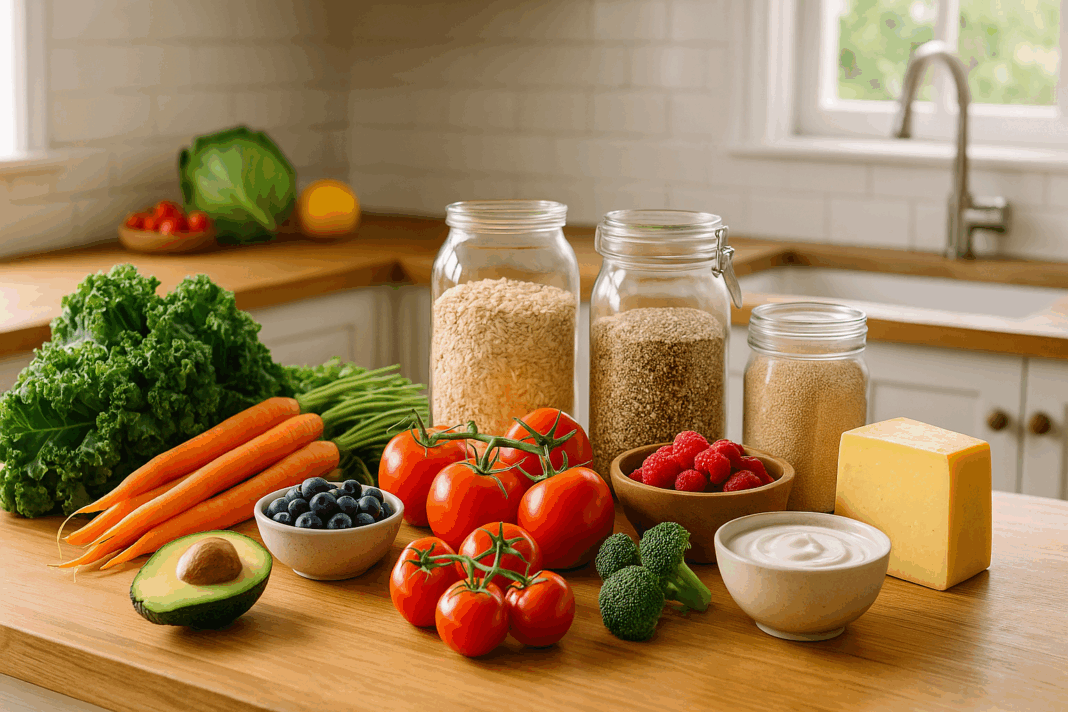In today’s fast-paced world, where processed snacks and convenience meals often dominate our plates, more people are turning to the wholesome food diet as a way to restore balance, energy, and long-term health. At its core, this way of eating emphasizes foods that are minimally altered from their natural state, offering the body a nutrient-rich foundation that supports well-being at every level. But with so much conflicting advice about what foods are considered whole foods or which ingredients to avoid, the journey toward unprocessed eating can feel confusing without the right guidance.
That’s why creating a solid whole food list is such a powerful starting point. Knowing what whole foods are—and how to integrate them into your life with ease and confidence—can transform not only your diet but your relationship with food itself. From understanding why certain dairy products like yogurt or cheese may or may not qualify as whole foods, to learning how to shop smart for non processed food options, this guide offers everything you need to know to get started on a truly nourishing path. And as you’ll discover, the rewards of a wholesome food diet go far beyond nutrition—they touch every area of your health and lifestyle.
You may also like: How a Whole Foods Diet Supports Sustainable Weight Loss: Expert Tips for Eating Whole Foods to Lose Weight Safely
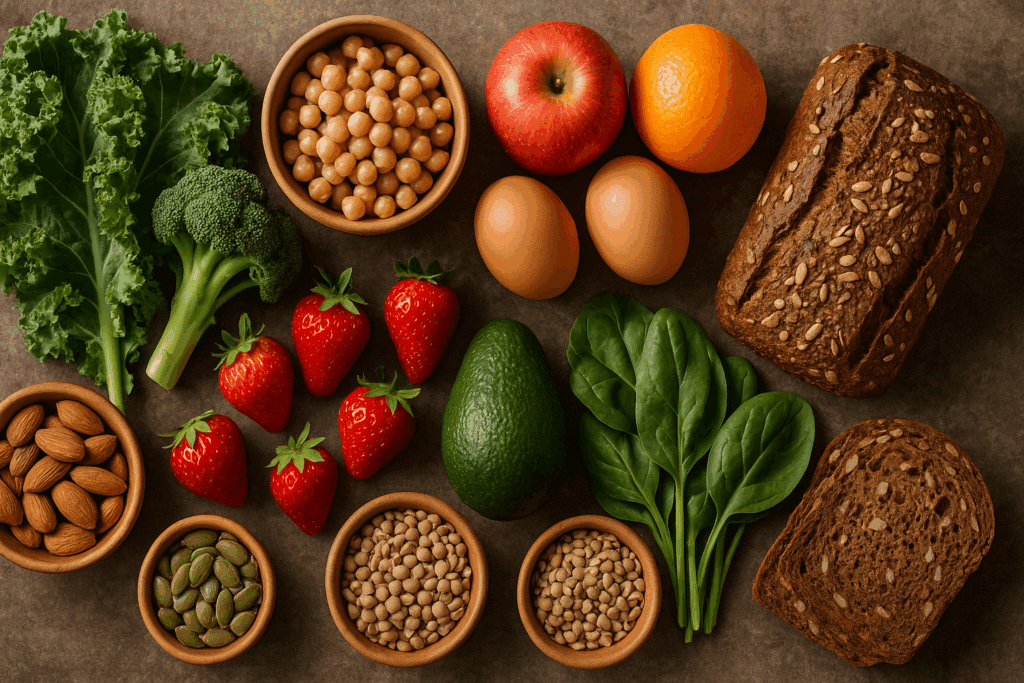
What Are Whole Foods and Why Are They Essential for Health?
Whole foods are foods that remain as close as possible to their natural form. That means they haven’t been significantly altered by industrial processing, nor do they contain artificial additives, preservatives, or chemically engineered flavorings. So, when asking, “what are wholefoods?” the simplest answer is this: whole foods are real, whole ingredients—nothing added, nothing removed unnecessarily.
Fresh vegetables, fruits, legumes, whole grains, nuts, seeds, and unprocessed meats all fall under this umbrella. Even dairy can qualify—when someone asks, “is yogurt a whole food?” or “is cheese considered a whole food?” the answer depends on its preparation. Plain Greek yogurt with live cultures and no added sugar is a whole food. Traditional cheese made from milk, cultures, and salt also fits. But once stabilizers, emulsifiers, or dyes are introduced, it no longer qualifies.
Incorporating these foods into your meals provides the body with fiber, essential fatty acids, antioxidants, and an abundance of vitamins and minerals. Unlike processed options, whole foods support gut health, balance blood sugar, reduce inflammation, and naturally manage appetite and weight. These benefits are not just anecdotal—numerous studies support the advantages of choosing foods that are not processed for cardiovascular, digestive, and metabolic health.

The Unprocessed Food Diet: Back to Basics for Better Living
If you’ve ever asked yourself, “what are some unprocessed foods I can eat daily?” the answer is refreshingly straightforward. Foods like leafy greens, carrots, apples, oats, wild rice, lentils, beans, and wild-caught salmon are among the best whole foods you can include. These ingredients have not been broken down, stripped of nutrients, or loaded with synthetic ingredients.
A non processed food diet prioritizes these options, eliminating refined sugars, hydrogenated oils, artificial preservatives, and enriched flours. This approach not only enhances nutrient intake but can also reverse the effects of long-term exposure to highly processed meals. Those who adopt a unprocessed food diet often report improved digestion, steadier energy, clearer skin, and even reduced symptoms of chronic health conditions.
Building an unprocessed foods list that works for your lifestyle involves awareness and experimentation. Start with a few familiar options and expand over time. The beauty of eating whole is that variety is encouraged—and often necessary—for getting the full spectrum of nutrients.
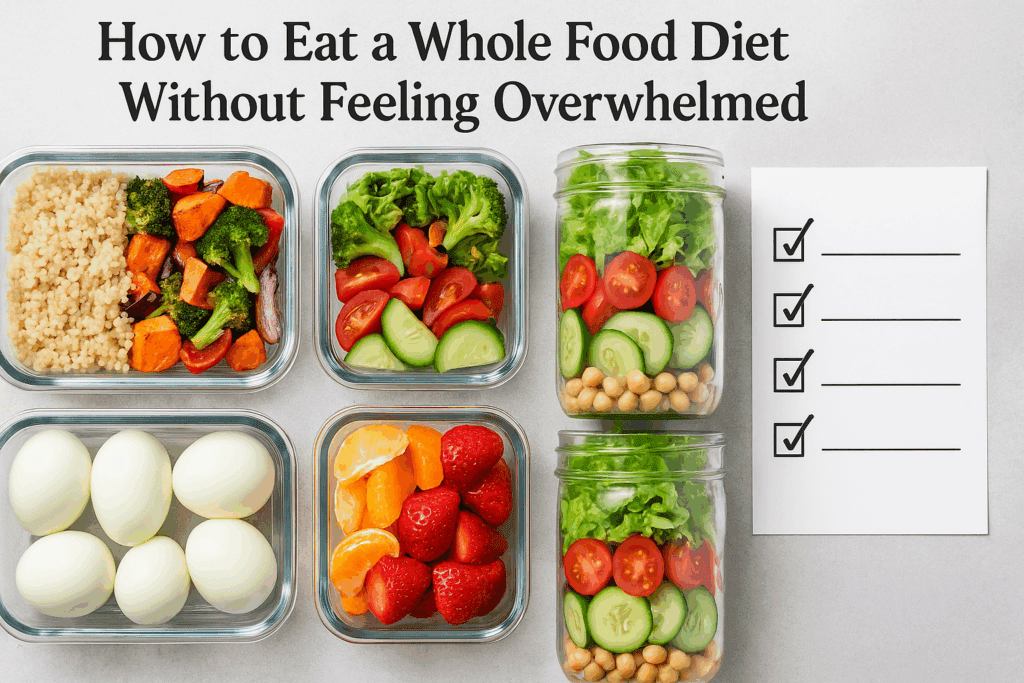
How to Eat a Whole Food Diet Without Feeling Overwhelmed
Shifting your eating habits doesn’t mean you need to throw out your pantry or prepare gourmet meals every day. It starts with gradually replacing processed options with better alternatives. For example, swap sugary breakfast cereals for steel-cut oats topped with berries and chia seeds. Replace packaged granola bars with raw almonds or a banana with almond butter.
The key to success lies in making your whole food diet plan manageable and enjoyable. Start by identifying what foods are considered whole foods in your culture or personal preferences. Build meals around these familiar ingredients. Ask yourself: “What are some whole foods I already enjoy?” From there, build a whole foods food list you can refer to every time you shop or meal prep.
You can also plan your meals around themes—such as “Meatless Monday” or “Whole Grain Wednesday”—to stay inspired. Keep your fridge stocked with pre-washed greens, boiled eggs, pre-cut veggies, and cooked quinoa to make quick meals easy. With the right preparation, whole food eating becomes a lifestyle, not a diet.
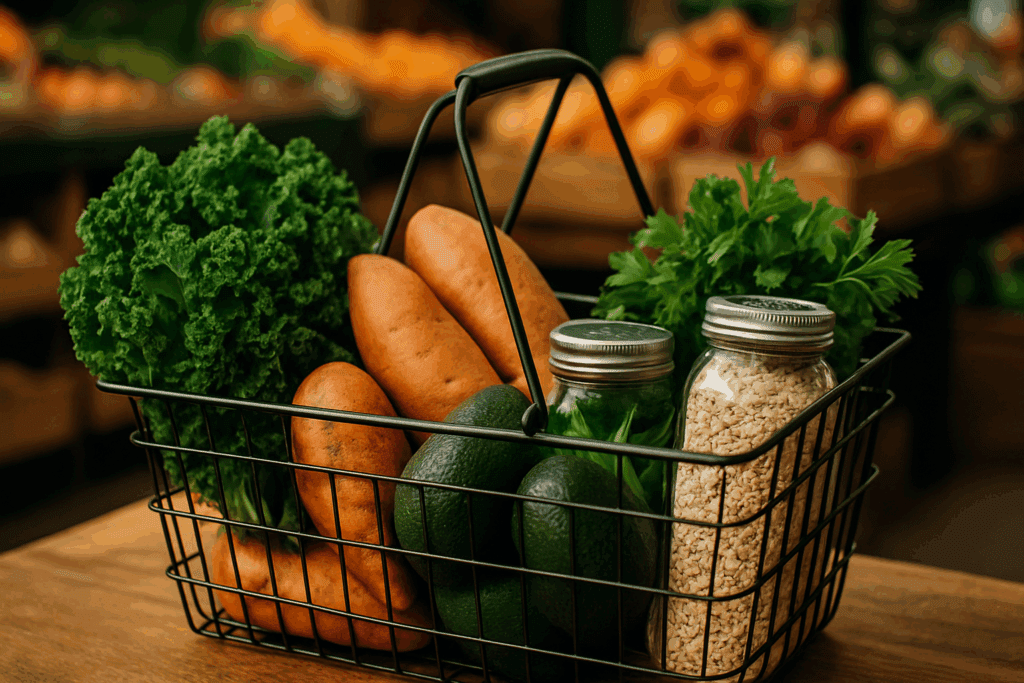
Your Go-To Whole Food List for Grocery Shopping and Meal Planning
Crafting a reliable list of non processed foods to buy is one of the most practical steps you can take. This not only simplifies grocery shopping but also removes the temptation to reach for ultra-processed items. A strong whole food list includes fresh produce (both seasonal and frozen), whole grains like bulgur and farro, legumes such as lentils and chickpeas, and healthy fats from nuts, seeds, and avocados.
When it comes to protein, ask questions like “is meat a whole food?” or “is butter a whole food?” Lean cuts of unprocessed meat are considered whole foods, as is pure butter made from cream and nothing else. Always read labels: the shorter and simpler the ingredient list, the better. That same logic applies when evaluating whether “is cheese a whole food?”—a traditional cheddar made with only milk, enzymes, and salt qualifies. A cheese product with added colors or preservatives does not.
With your whole foods food list in hand, you can approach meal prep with confidence. Batch-cook beans, roast vegetables, and prepare sauces or dressings from scratch using whole ingredients. This upfront investment saves time later while ensuring every meal supports your wholesome food diet goals.
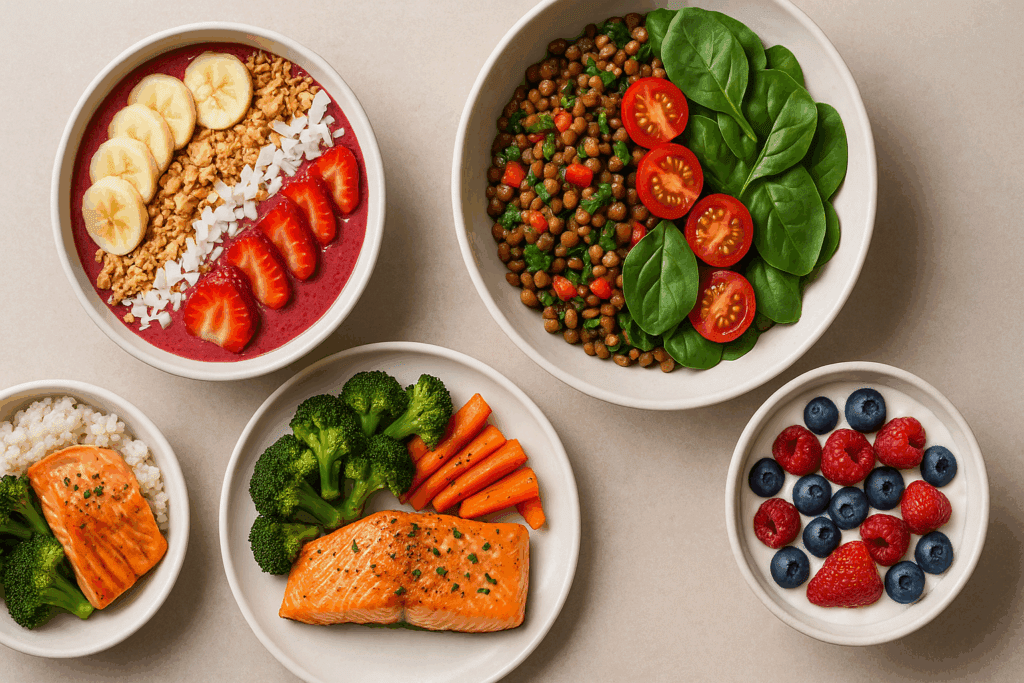
Whole Food Diet Inspiration: Delicious Ideas for Every Meal
Eating whole doesn’t have to feel bland or repetitive. In fact, one of the greatest joys of a wholesome food diet is the creative potential it unlocks. Imagine starting your day with avocado toast on sprouted grain bread, or a smoothie bowl topped with sliced banana, walnuts, and a sprinkle of flaxseed. For lunch, a salad of arugula, roasted sweet potato, lentils, and a lemon-olive oil dressing delivers both flavor and fullness.
Dinner can be just as satisfying with a baked salmon filet served alongside sautéed kale and wild rice. For dessert, consider fresh berries with a dollop of plain yogurt and a drizzle of raw honey. These meals highlight the best whole foods not just for their nutrition, but for the pleasure they bring to the table.
If you’re looking for whole food diet inspiration, explore global cuisines like Mediterranean, Japanese, or Indian dishes that naturally rely on fresh, unprocessed ingredients. Cooking this way is not only better for your body but fosters appreciation for food as nourishment rather than mere fuel.
Understanding the Role of Whole Foods Stores in Your Lifestyle
When people ask, “is Whole Foods good for you?” they may be referring to both the store and the philosophy. Whole Foods Market—the grocery chain—does offer a wide array of unprocessed foods, including organic produce, pasture-raised meats, and minimally processed pantry staples. But it’s important to remain discerning: just because something is sold at Whole Foods doesn’t mean it fits into your wholesome food diet.
Use your knowledge to guide your purchases. Stick to the outer aisles where fresh food is located and be skeptical of convenience items, even when they appear “healthy.” The best strategy is to come prepared with your own list of non processed foods to buy so that your shopping trip supports your goals rather than tempting you away from them.
Ultimately, while Whole Foods Market can be a valuable resource, the most important ingredient in your wholesome food diet is intentionality. With or without the store, you can find great whole foods at local markets, co-ops, or even conventional grocery stores—so long as you know what to look for.
Are Dairy Products Like Cheese and Yogurt Considered Whole Foods?
Dairy often sparks debate in whole food circles, especially around questions like “is yogurt a whole food?” or “is cheese considered a whole food?” The answer lies in the processing. Plain, unsweetened yogurt made with live cultures and milk fits the definition of a whole food. Flavored yogurts with thickeners, dyes, or artificial sweeteners do not.
The same logic applies to cheese. Traditional cheeses like cheddar, mozzarella, or gouda made from just milk, enzymes, and salt are examples of whole foods. But processed cheese slices or spreads typically include additives that disqualify them from a wholesome food diet.
Even with clean dairy options, moderation is key. Choose high-quality, organic dairy when possible, and pair it with other unprocessed foods for balanced meals. By understanding how these items fit into your overall plan, you can make informed decisions that support your health without unnecessary restriction.

Frequently Asked Questions: Wholesome Food Diet and Unprocessed Eating
1. What are some practical ways to transition from processed to unprocessed foods without feeling overwhelmed? Transitioning to unprocessed foods doesn’t need to happen overnight. A helpful approach is to gradually introduce whole foods into your meals while phasing out ultra-processed items. Begin by replacing store-bought sauces or dressings with homemade alternatives using ingredients from your whole food list. Preparing one or two meals per week using only foods that are not processed can build confidence and routine. Keeping a flexible whole food diet plan allows you to adapt at your own pace without pressure, making the process more enjoyable and sustainable.
2. Is eating a wholesome food diet more expensive, and how can it be budget-friendly? While it may seem that a wholesome food diet costs more, strategic shopping can make it highly affordable. Buying in bulk, especially legumes, oats, and rice, can cut costs significantly. Shopping with a list of non processed foods to buy and prioritizing in-season produce or frozen vegetables helps manage expenses. Avoiding expensive packaged health foods and focusing on simple, whole ingredients—like potatoes, lentils, and eggs—can keep meals budget-conscious. With a little planning, even the best whole foods can fit into tight grocery budgets.
3. Can a wholesome food diet support specific health goals like improved energy or hormonal balance? Yes, a wholesome food diet can positively influence energy levels, mood, and hormonal function. Whole foods rich in B vitamins, such as leafy greens and whole grains, support adrenal health and energy metabolism. Including healthy fats like avocado and seeds helps maintain hormonal balance, especially for those navigating stress or aging. A consistent unprocessed food diet also stabilizes blood sugar, which reduces fatigue and emotional fluctuations. These functional benefits go beyond general wellness, aligning food choices with specific physiological needs.
4. What are considered whole foods that support digestive health specifically? Whole foods that aid digestion often include fiber-rich vegetables, fermented products, and seeds. For instance, artichokes, flaxseeds, and beets promote regular bowel movements and feed beneficial gut bacteria. In an unprocessed foods list focused on digestive health, include kefir, kimchi, and plain yogurt—and yes, when asked “is yogurt a whole food?” the answer is yes if it is unsweetened and minimally processed. These examples of whole foods naturally enhance gut function without needing supplements. When consumed regularly, they create a supportive environment for digestive enzymes and microbiota.
5. Are animal-based products like cheese, butter, and meat part of a non processed food diet? Whole food diets can include select animal products when chosen mindfully. Whether “is cheese a whole food” or “is butter a whole food” depends on the ingredient quality and processing. Traditional butter made from cream and salt is considered a whole food, as is cheese without additives or preservatives. Similarly, “is meat a whole food” is answered affirmatively when referring to unprocessed cuts like a grass-fed steak or pastured chicken breast. These proteins are part of a comprehensive whole foods food list, especially when paired with fiber-rich plant foods.
6. How can I maintain a whole food diet plan while traveling or dining out? Maintaining a wholesome food diet while traveling is easier with a bit of foresight. Packing simple, portable foods like nuts, apples, or boiled eggs from your list of non processed foods to buy ensures healthy options are always available. At restaurants, choose grilled, steamed, or roasted dishes over fried or breaded items, and ask for sauces on the side. Learn how to recognize what foods are considered whole foods even when they appear on a menu in less obvious ways. Many cuisines offer inherently unprocessed foods—Japanese sashimi, Greek salads, or Indian lentil stews, for example—that align with wholesome food diet values.
7. What role does a wholesome food diet play in long-term mental health and cognitive function? There is growing evidence that a diet rich in unprocessed foods benefits mental clarity, mood regulation, and long-term cognitive health. Whole grains, berries, nuts, and leafy greens from your whole food list are high in antioxidants and phytochemicals that protect brain cells. Omega-3 fatty acids from walnuts or wild-caught fish are particularly effective for reducing inflammation and supporting neural communication. A non processed food diet also promotes steady glucose levels, which is essential for concentration and memory. Regularly including these best whole foods may help reduce the risk of neurodegenerative conditions over time.
8. Can a wholesome food diet be flexible for different eating styles like vegetarian, paleo, or Mediterranean? Yes, one of the strengths of a wholesome food diet is its adaptability. Vegetarians can rely on beans, legumes, whole grains, and dairy like minimally processed yogurt or cheese. For paleo eaters, unprocessed meats, eggs, and vegetables form the core of a non processed food diet. Mediterranean-inspired plans emphasize olive oil, fish, greens, and grains—all excellent examples of whole foods. Whatever the eating style, the unifying factor is prioritizing what are whole foods over processed substitutes. Personalizing your whole food diet plan to reflect your ethics and tastes ensures consistency and enjoyment.
9. How can I stay inspired and avoid food fatigue when eating mostly non processed foods? Food fatigue is a real concern, especially when switching to a diet that limits processed options. Seeking whole food diet inspiration from global cuisines helps keep meals exciting. Rotating the types of grains, vegetables, and proteins you use—like swapping quinoa for buckwheat or chickpeas for black beans—prevents monotony. Exploring new cooking methods, such as roasting, fermenting, or using spice blends, introduces variety while staying true to your wholesome food diet. And when in doubt, revisit your list of non processed foods to buy and pick one new item to try each week.
10. What are some commonly overlooked whole foods that should be on my grocery list? Beyond the basics, many great whole foods are often overlooked. Items like seaweed, turnips, amaranth, and sardines are nutrient-dense and versatile. When creating your whole foods food list, don’t forget to include herbs like parsley or basil, which pack antioxidants and add flavor without additives. In terms of dairy, answering “is cheese considered a whole food” or “is yogurt a whole food” reminds us that traditional preparation matters. Including lesser-known items in your unprocessed foods list not only boosts nutrition but enhances your culinary creativity. The more diverse your list of non processed foods becomes, the more sustainable your wholesome food diet will be.
Conclusion: Your Whole Food List Is the Key to a More Nourishing Lifestyle
Adopting a wholesome food diet isn’t about perfection or rigid rules—it’s about progress, awareness, and cultivating a better relationship with the food you eat. By building a thoughtful whole food list and familiarizing yourself with what are considered whole foods, you equip yourself with the tools needed to make consistently healthier choices. Whether you’re browsing a market or cooking at home, knowing which foods are not processed empowers you to create meals that are rich in flavor, nutrition, and intention.
In the long term, a diet centered around unprocessed foods supports far more than physical health. It boosts mental clarity, supports emotional balance, and reinforces mindful habits that can ripple across every part of your life. From understanding if yogurt or cheese qualifies as a whole food, to embracing the best whole foods your region has to offer, this journey is rooted in knowledge and sustained by inspiration.
So start with your list of non processed foods to buy, explore examples of whole foods in your kitchen, and embrace the possibilities of a lifestyle that nourishes you from the inside out. The wholesome food diet isn’t just a way to eat—it’s a way to thrive, naturally and sustainably.
Was this article helpful? Don’t let it stop with you. Share it right now with someone who needs to see it—whether it’s a friend, a colleague, or your whole network. And if staying ahead on this topic matters to you, subscribe to this publication for the most up-to-date information. You’ll get the latest insights delivered straight to you—no searching, no missing out.
Further Reading:
11 Simple Ways to Focus on Whole Foods Instead of Clean Eating
Disclaimer
The information contained in this article is provided for general informational purposes only and is not intended to serve as medical, legal, or professional advice. While NewsHealthWatch strives to present accurate, up-to-date, and reliable content, no warranty or guarantee, expressed or implied, is made regarding the completeness, accuracy, or adequacy of the information provided. Readers are strongly advised to seek the guidance of a qualified healthcare provider or other relevant professionals before acting on any information contained in this article. NewsHealthWatch, its authors, editors, and contributors expressly disclaim any liability for any damages, losses, or consequences arising directly or indirectly from the use, interpretation, or reliance on any information presented herein. The views and opinions expressed in this article are those of the author(s) and do not necessarily reflect the official policies or positions of NewsHealthWatch.

